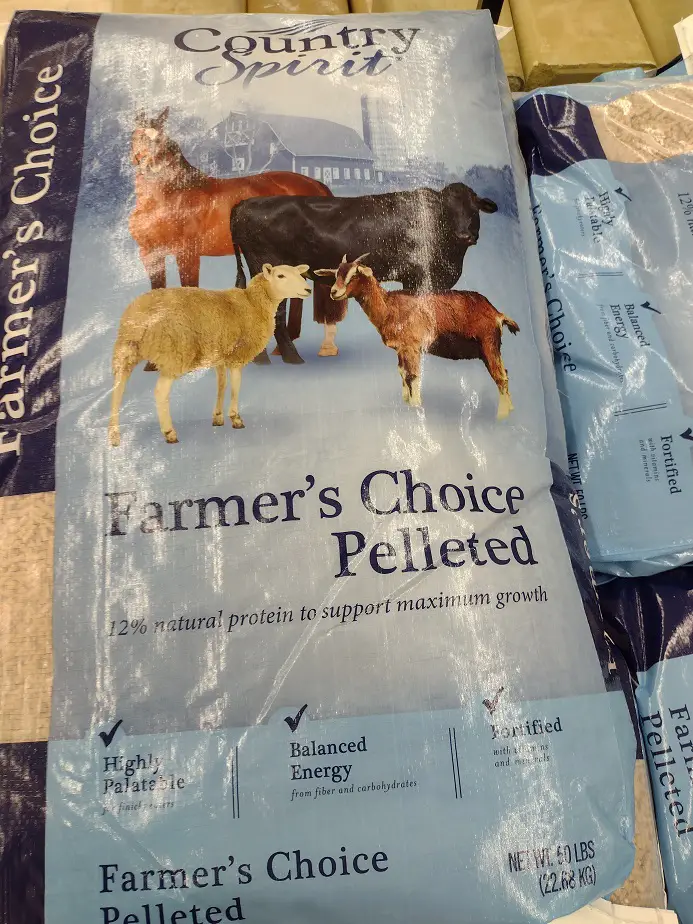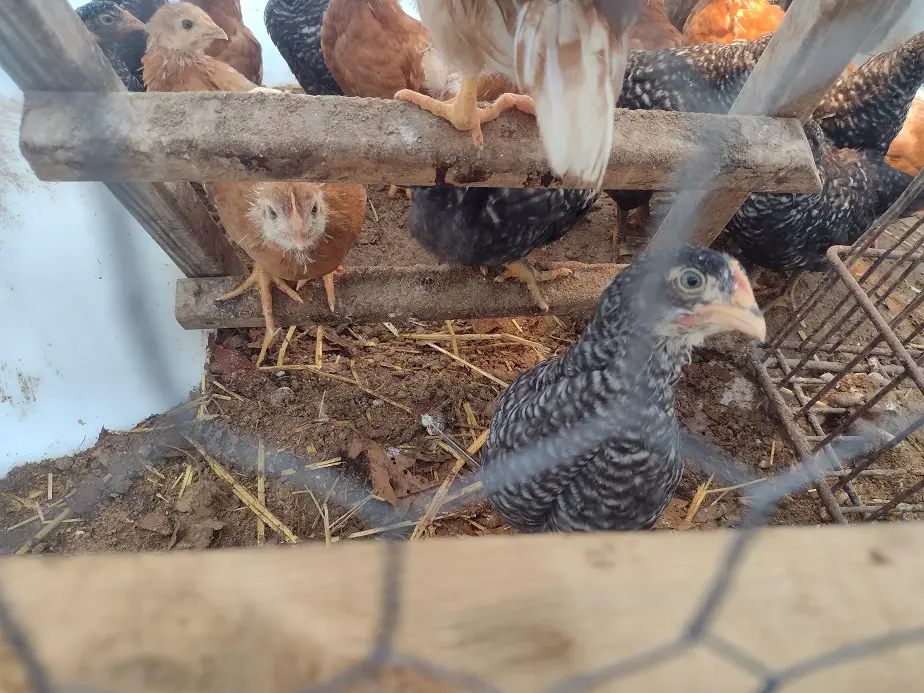I’ve raised chickens on all-stock before. It can work decently if you know what you are doing.
Chickens can eat All-Stock feed, but it’s usually low in several of the nutrients they need. Most All-Stock is low in protein, particularly lysine and methionine, and a little low in calcium. It won’t support the full growth of meat chickens or the full laying capacity of egg chickens without supplementation.
So is it a good idea and how would you balance the diet?
Will All-Stock hurt Chickens?
There is nothing in All-Stock that could hurt chickens. All-stock is not bad for chickens, and it can be a great addition to free-range chickens that eat a lot of bugs. All-stock feed is not a complete chicken feed, but can be part of a healthy diet. It would need to be supplemented with protein and calcium.
All stock is a grain-based feed that’s usually higher in fiber. It had added minerals and may contain grain by-products like brewers grain, which is actually a pretty good feed ingredient. There really are two types of all-stock, the extruded pellet, and the whole grain.
Extruded pellets are usually made more of by-products like spent brewery grain, sugarbeet pulp, and other stuff like ground corn or soybean meal. It’s cheaper ingredients, but not any lesser quality. The stuff with unprocessed grains in it is more expensive, but not necessarily any better.
Some have molasses added as a mineral and energy boost. I don’t prefer that kind. The molasses helps animals put on weight, it’s better for animals that need to gain weight quickly. I like a no-molasses feed for the most part. Agricultural molasses is half sugar, which tends to convert into fat.
I fed an All-Stock to my birds the last couple years. It worked. It’s better in the off-season when they don’t have the pressure to lay as many eggs. It’s also the kind of feed you’d give to older pet birds who don’t lay much anymore.

How to Balance out All-Stock for Chickens
During the laying season, we added calcium to the feed by saving and grinding their eggshells and offering it to the chickens in a separate bowl. That helped them stay healthy and develop decent eggshells. The protein issue was one to figure out how to tackle.
Laying hens need about 16 percent overall protein and 3-4 percent lysine to pop out an egg almost daily. Most all-stock is 12 percent protein and has 1 percent lysine. We fixed that by giving them all our protein-rich food scraps, like beans and meat, and by giving them bugs.
I pick a lot of bugs out of our 1/2 acre garden, that goes to the chickens. The Japanese Beetles, the Potato Beetles, the Stinkbugs, our chickens love them all. At one point, I let the chickens loose near a tree infested with carpenter ants. They really made a dent in the ant population.
I have found that chickens free-ranging in the woods get a lot of protein. As they scrounge, they find leaf worms under the old leaves. Those worms are usually on top of the soil surface, just under forest floor debris. They’re great for chickens.
Now, it’s not a perfect feed for chickens. It you want to run a maximum production operation, it’s probably not going to make you happy. For us, the All-Stock was significantly cheaper than layer feed and we made it work enough to be worth it. Especially because we had older (3 to 5) birds.
The older birds weren’t laying at top speed and didn’t need as concentrated of a ration. Older hens usually get fat on a layer feed. Fat birds don’t lay many eggs.
This year we have 2 new flocks. They matured around November, but wouldn’t start laying eggs in winter so we had them on an all-stock option. When the weather warmed and daylight lengthened, we put the, on a decent layer feed.
Right now, they are laying about 0.7 eggs a day each (about 10 eggs from 14 hens). Last year, the older flock laid between 0.5 and 0.3 eggs a day (between 3 and 5 from 12 birds). There is a big difference. older chickens are not as productive, on average, as young ones.
We had just decided to keep them going, but on a cheaper feed to make it doable. Compared to the price of new chicks, plus keeping and feeding them for 6 months before they start laying, we saw it as worth it until late last summer. They really just stayed down near 0.3 eggs per hen per day.
Then cons got in the pen and killed half the chickens, so it was just time to get new birds. We went with Isa Browns and Barred Plymouth Rocks (my personal favorite). They started laying just two weeks ago, and we had our first 10-egg day yesterday. My girls are getting ready to sell eggs in the neighborhood.
The feed is $15.50 per 50-pound sack. The cheap All-Stock is around $11 right now, but these fresh birds will lay about twice as many eggs if they stay on the higher concentrated feed. In two or three years, We may put them on a cheaper option but for now, the layer feed will be more cost-effective.
There are many different feeding options for chickens and most of them will work. Some work better than others for your particular situation. Do what you can to take care of yourself and your animals.
Related Articles:

